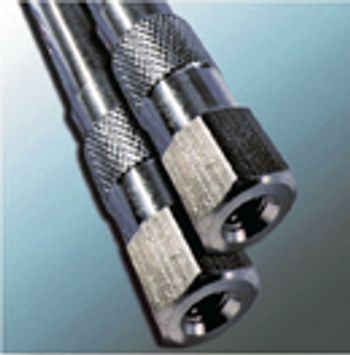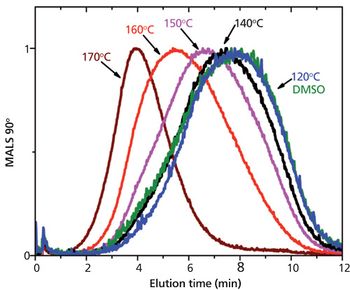
LCGC North America
Strongly retained sample compounds can cause various changes in the appearance of a chromatogram.

LCGC North America
Strongly retained sample compounds can cause various changes in the appearance of a chromatogram.

LCGC North America
Thermal desorption sampling often provides a means for bringing otherwise intractable samples to a gas chromatography (GC) column for separation and detection. In this installment, John Hinshaw describes the principles of thermal desorption sampling in relationship to other analysis techniques for volatile solutes.

LCGC North America
Cloud-point extraction (CPE) manipulates temperature and surfactant concentration to move aqueous solutes into a micelle phase for separation. Although CPE has been around for some time, it is still considered an emerging technique. Much of the development, and most applications, of CPE have dealt with extraction and preconcentration of inorganic solutes. More recently, attention has turned to the use of CPE in the isolation of organic solutes. This month, we review how CPE works and focus on applications for extracting organics.

LCGC North America
These GC–MS instrument setup requirements are critical to success.

LCGC North America
Glycosylation of monoclonal antibody (mAb) therapeutics is widely recognized by the regulators and the industry as a critical quality attribute (CQA). Hence, it is necessary that glycosylation is measured and adequately controlled during production. This installment reviews the various process parameters and raw material attributes that affect glycosylation, as well as the different analytical tools that are used for characterization, with greater emphasis on the chromatographic methods of analysis. Key recent advancements that have occurred in the past five years are also discussed briefly. While significant progress has been made in the monitoring of glycosylation, its real time control has yet to be demonstrated.

LCGC North America
An unusual source of contamination was found in the reversed-phase LC analysis of a 0.4% (w/w) drug product during the development stability studies at levels much greater than the 4 ppm limit of quantitation. System-related sources (mobile phase, injector carryover and contamination), formulation components (drug substance, excipients), and the sample-handling procedure were studied by a systematic approach. The evaluation of the sample-handling procedure identified extractables from the sample vial (different from that specified in the analytical method) and the rubber-lined vial cap, and incidental transfer of residue from commonly used nitrile gloves as the sources of unintended contamination in sample analysis.

LCGC North America
Affinity separations offer great potential for pharmaceutical analysis.

LCGC North America
This review highlights applications for which AF4 is particularly well suited, and explains when not to use the technique.

LCGC North America
Click the title above to open the LCGC North America January 2016 regular issue, Vol 34 No 1, in an interactive PDF format.